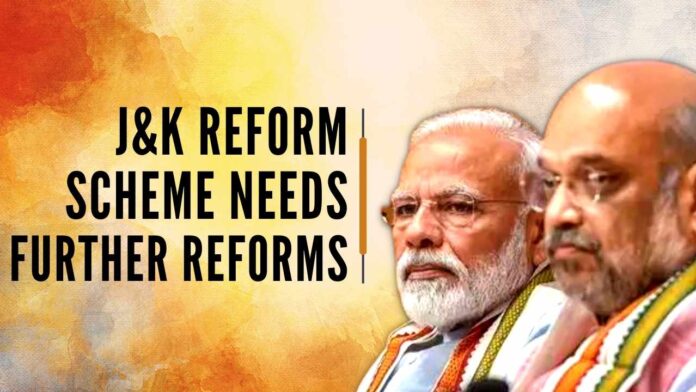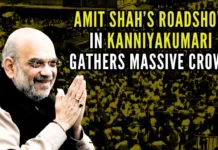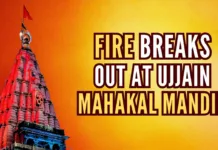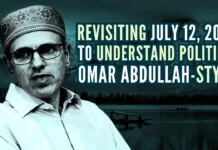
Need for further reforms
The BJP National Executive (NE) met in New Delhi on January 16 and 17. It passed resolutions on the prevailing socio-economic and political situation in the country and India’s status in the comity of nations. It also extended party president J P Nadda’s term till June 24. Besides, it discussed in detail the party’s agenda for the future, including the strategy to win Assembly elections in the nine poll-bound states such as Tripura, Nagaland, Meghalaya, Karnataka, Madhya Pradesh, Chhattisgarh, Rajasthan, Telangana, and Mizoram.
NO Assembly elections
The most remarkable aspect of the whole situation was that the BJP NE excluded Jammu and Kashmir Union Territory (J&K), which has been under the Central rule since June 2018, from its agenda as circulated among the members as far as Assembly elections in this UT were concerned. Even far more significant was the conspicuous absence of J&K in the speeches made by J P Nadda and PM Narendra Modi as far as the issue of Assembly elections was concerned. Indeed, the BJP did exceedingly well to exclude J&K from its electoral agenda. It’s obvious that the BJP bigwigs and policy planners in the party finally appreciated the ground reality as it exists in Kashmir and thought it politically prudent to eschew the idea of elections in J&K at least till January 2024.
This writer has been consistently urging PM Modi and HM Shah to abandon the idea of Assembly polls in J&K on the ground that elections will automatically mean retransfer of the state power from the Centre to the subversive Kashmiri Muslim leadership and the results would be disastrous. This fear, which is real, stems from the fact that Kashmiri politicians like Farooq Abdullah, Omar Abdullah, Saif-ud-Din Soz, GA Mir, Vikar Rasool, Ghulam Nabi Bhat alias Azad, Mehbooba Mufti, Altaf Bukhari, and Sajad Lone have already made public what they would do to and in J&K if they win elections and form government in the UT. They have all declared from time to time that they would not only religiously work for the restoration of the pre-August 2019 politico-constitutional status but would also strive hard to even go beyond.
Time to review the post-2019 scenario
Now that the BJP, which is in full command, has excluded J&K from its electoral agenda, it’s also appropriate time for PM Narendra Modi and HM Amit Shah and their think tanks to review the overall impact of their August 5-6, 2019 path-breaking, epoch-making and revolutionary reform scheme (abrogation of Articles 35A and 370 and conversion of J&K State into UT of J&K and UT of Ladakh) the Union government introduced to stem the rot in the J&K polity. It’s the most opportune moment for them to sit up and discuss if their reform scheme has produced or not produced the desired results. It’s a must.
Why must the powers-that-be review the post-August 5-6, 2019 situation in J&K UT like it has been reviewing the political situation at regular intervals in the Ladakh UT since then and further reform the August reform scheme? There are many potent reasons for further reforming the August 2019 reform scheme and three, among them, are very important.
Plight of Jammu pre and post-August 2019
The August 2019 reform scheme has utterly failed to address the issues facing the people of Jammu province (read the nation’s backbone in this strategic region) since 1947, when Maharaja of J&K, Hari Singh, took the momentous decision and merged his princely state with the Indian Dominion or linked the fate of his state and his people with India. Hari Singh had hoped that the merger of J&K with India would protect and promote further the paramount national interest in this region and also help the people of Jammu province achieve a status in the country they legitimately deserved. Sadly, however, it didn’t happen. What happened was to the contrary. The successive governments at the Centre wilfully ignored the socio-cultural and politico-economic needs and compulsions of the people of Jammu province in their desperate bid to appease and please Kashmiri Muslim leadership and did everything under the sun to hold J&K aloof from the national mainstream. In short, the story of Jammu province post-1947 is one of total neglect and exclusion from all walks of life; it is one of slavery.
To be more precise, the ruling classes in New Delhi left no stone unturned to arm the Kashmiri Muslim leadership with absolute, unbridled, and extraordinary legislative, executive, judicial and financial powers so that it could drive J&K away from India; and it could convert Jammu and Ladakh into Kashmir’s colonies and reduce the citizens of these two distinct regions to the status of mere subjects unworthy of exercising even normal civil, political and economic rights. They all from time to time took steps that were nothing but more rivets in the chain of Jammu’s and Ladakh’s slavery.
It may appear ridiculous and preposterous but it’s a fact that things for the people of Jammu province, especially Hindus, have not improved even slightly and that they continue to suffer as before. And Jammu province will continue to suffer as long as it remains tagged with Kashmir whose leadership is ideologically and by conviction anti-India/ anti-Jammu. Jammu province has to be separated from Kashmir if the people of this grossly ignored and politically neglected province are to lead a secure and dignified life and manage their own things in a meaningful manner and as per their requirements.
Plight of hounded out Kashmiri Hindus
The August 2019 reform scheme had given the nation to understand that the internally-displaced Kashmiri Hindus would be dispensed justice and those responsible for their persecution and expulsion from Kashmir would be brought to book. Nothing of this sort has happened. New Delhi has refused to term as “genocide” their persecution and total migration from Kashmir in January 1990. Even the apex court didn’t consider it prudent to order a high-level probe into their genocide. In fact, the Supreme Court rejected four times in 2017, 2019, and 2022 their pleas (petition, review petition, and curative petition) seeking a probe into their genocide.
The fact of the matter is that their killers continue to roam freely. The result has been a spurt in the targeted killings of Kashmiri Hindus and other non-Muslim government employees in Kashmir and the resultant migration of more Hindus from Kashmir to Jammu. The most horrible aspect of the whole situation is that J&K Lt Governor Manoj Sinha has rubbed more salt on the Kashmiri Hindu wounds by asserting that not only Kashmiri Hindus but others have also been killed in Kashmir and that “we must stop giving religious orientation to their killings”. No wonder then that the hope that Hindu refugees in their own country would return to their land of Vitasta today stands belied. They have made it loud and clear that they could not co-exist with those who threw them out of the Valley and that they will return to their original habitat only if their 1991 demand seeking a separate homeland for seven lahks Kashmiri Hindus within the Valley is conceded. And they do make a valid point. Their demand just can’t be brushed aside.
System remains unchanged
The August 2019 reform scheme had also given the nation to understand that it would witness radical changes in the system or that the Union government would rid the J&K administration of all undesirable elements so that the desired results could be achieved. It did introduce all the Central laws in J&K, declared null and void many undesirable J&K laws, and amended many J&K laws. But all this was not just enough because the administrative machinery, which was to implement these laws, remained almost unchanged. It is too well-known that there were, and are, elements in the set-up who were, and are, parts of the ongoing subversive movement.
The fact of the matter is that the separatists, the Kashmiri ruling elite, and separatists/ terrorists and supporters of terrorists in the secretariat, administrative wings, and elsewhere all worked in tandem to wreck the polity both from within and outside and there are potent reasons to believe that this unholy anti-India and anti-Hindu nexus is very much intact even now. That the Manoj Sinha administration has dismissed from service many officials, including from the police and education departments and revenue magistracy, and that the agencies have been asked to prepare lists of such rogue elements in the administration so that they are also removed from service prove the point. There are also cogent reasons to believe that Kashmiri politicians, including all the three former CMs, ministers, and legislators, who were kept under detention between August 4, 2019, and August 2020 and who have been openly preaching sedition and promoting fissiparous tendencies in Kashmir in a most brazen manner since August 2020, continue to have close links with certain rogue elements in the establishments. No wonder then that PM Modi’s reform scheme of August 2019, which integrated J&K fully into India, has not achieved what was desired to be achieved.
Lasting solution
It is hoped that PM Modi and his policy planners and think tanks would take cognizance of the ground situation in J&K and further reform the August 2019 reform scheme to break the backbone of Kashmir jihad. It has no other option but to separate Jammu from Kashmir; fulfill the urges and aspirations of the internally displaced Kashmiri Hindus; Indianise the J&K administration; smash the unholy nexus between separatists, Kashmiri politicians, and rogue elements in the administration; rein in Kashmiri politicians, including seditionists Abdullahs and Muftis; and grant Chandigarh-type UT status to Kashmir so that the state power remains with the Union government. The sooner the Modi government does so, the better.
Note:
1. Text in Blue points to additional data on the topic.
2. The views expressed here are those of the author and do not necessarily represent or reflect the views of PGurus.
PGurus is now on Telegram. Click here to join our channel and stay updated with all the latest news and views
For all the latest updates, download PGurus App.
- ‘Kashmir My core constituency’: Revisiting July 12, 2003 to understand politics, Omar Abdullah-style - March 15, 2024
- Total deviation from traditional approach: Seven takeaways from PM Modi’s March 7 Srinagar visit - March 9, 2024
- Status of political parties: Why is further J&K reorganization imperative? - March 1, 2024











A realistic assessment of the situation in J&K. There are enough evidence of looting the states assets and the money from the center by the ruling elites of the past. Shah should catch these looters and put them behind bars, confiscate their wealth before elections are announced in J&K.
An even a better strategy is to give state-hood to Jammu and keep Kashmir as a centrally administered UT.